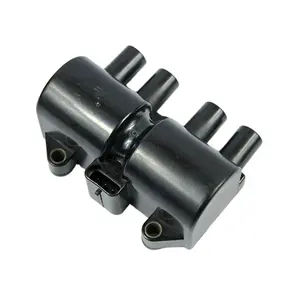Popular in your industry
















Related Searches:



















 Ready to Ship
Ready to Ship




Top categories
About nissan teana oxygen sensor
Nissan Teana Oxygen Sensor Overview
The Nissan Teana oxygen sensor is an essential component in modern automotive engineering, playing a critical role in the vehicle's exhaust system. This sensor is specifically designed to measure the oxygen levels in the exhaust gases, ensuring optimal performance and emissions control. Its primary function is to provide real-time data to the vehicle's engine management system, which adjusts the air-fuel mixture for efficient combustion.
Types and Applications
There are several types of oxygen sensors used in vehicles, including zirconia, titanium dioxide, and wideband sensors. The oxygen sensor for Nissan Teana is typically a zirconia or wideband sensor, which are known for their precision and durability. These sensors are crucial for various applications, from monitoring exhaust gases to optimizing fuel economy and reducing harmful emissions.
Features and Materials
The construction of an oxygen sensor for cars involves high-quality materials capable of withstanding extreme temperatures and chemical exposures. Typically, a combination of zirconium, yttrium, and platinum is used, providing the sensor with the necessary robustness to perform reliably over time. The advanced technology integrated into the Nissan Teana O2 sensor ensures accurate readings and longevity.
Advantages of Proper Functioning Sensors
A fully functional car oxygen sensor is vital for maintaining the vehicle's health. It helps in preventing issues such as poor performance, increased emissions, and potential damage to the catalytic converter. By ensuring the correct air-fuel ratio, the oxygen sensor in car systems also aids in achieving optimal fuel efficiency, leading to cost savings on fuel and maintenance in the long run.
Complementary Systems and Accessories
While the Nissan Teana oxygen sensor is pivotal for engine management, other systems like car proximity sensors and blind spot sensors contribute to overall vehicle safety. These sensors work in tandem to provide a comprehensive safety net, enhancing the driving experience with features that assist in avoiding collisions and other common road hazards.
Conclusion
In summary, the Nissan Teana oxygen sensor is a critical component that contributes significantly to the vehicle's performance, safety, and environmental compliance. Its integration with other sensor systems creates a harmonious balance, ensuring a smooth and secure driving experience. For those in the automotive industry, understanding the importance and functionality of these sensors is key to maintaining vehicle integrity and customer satisfaction.





























